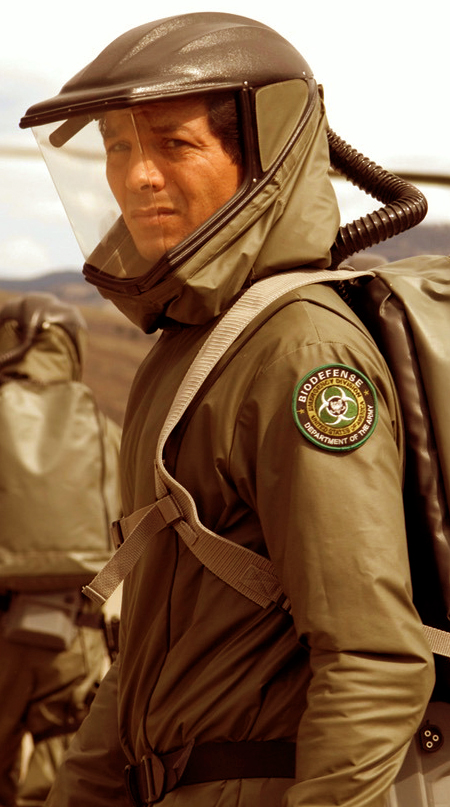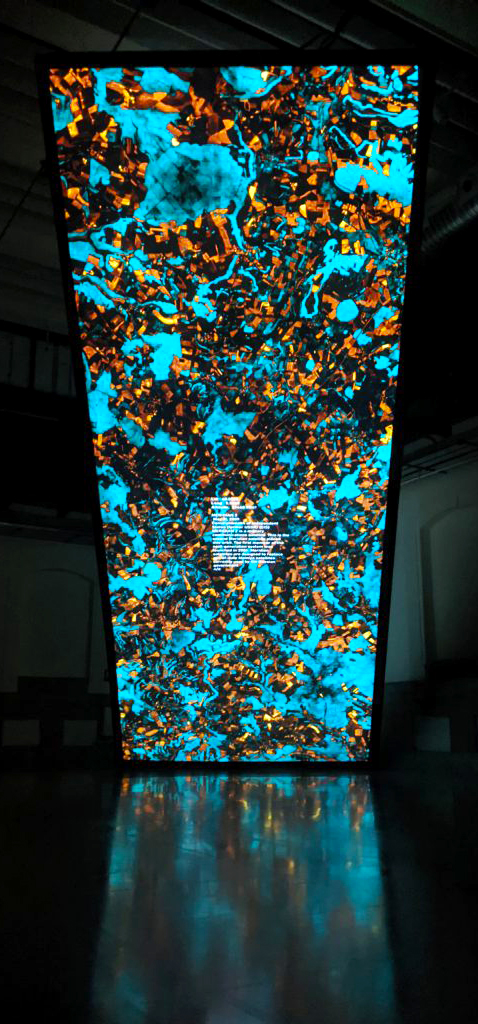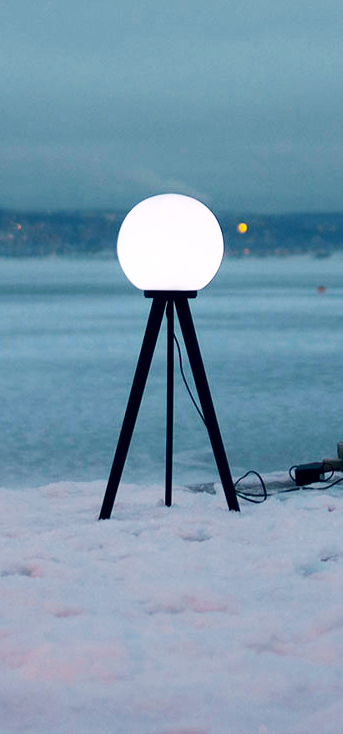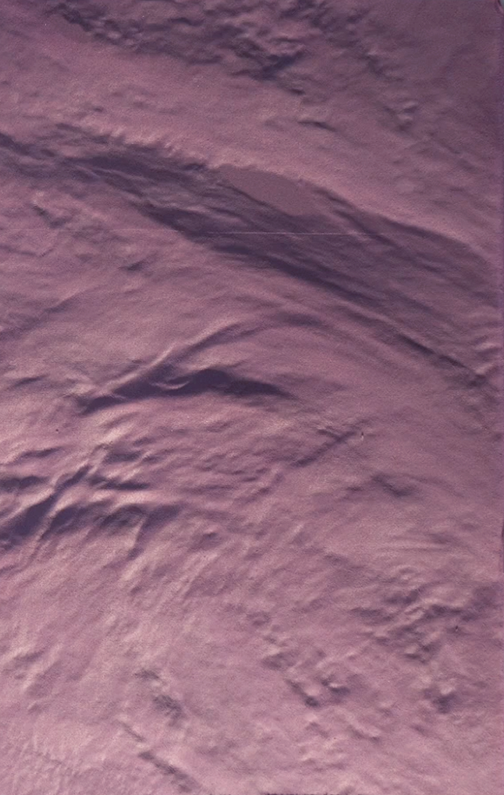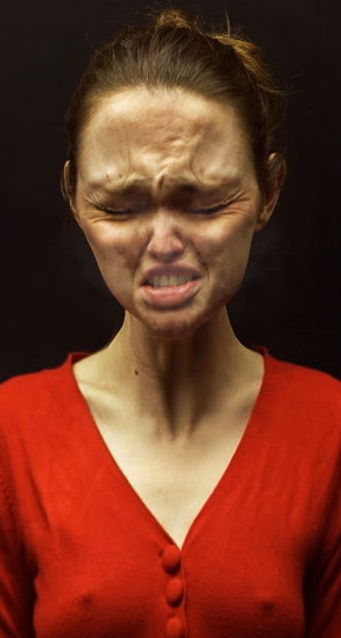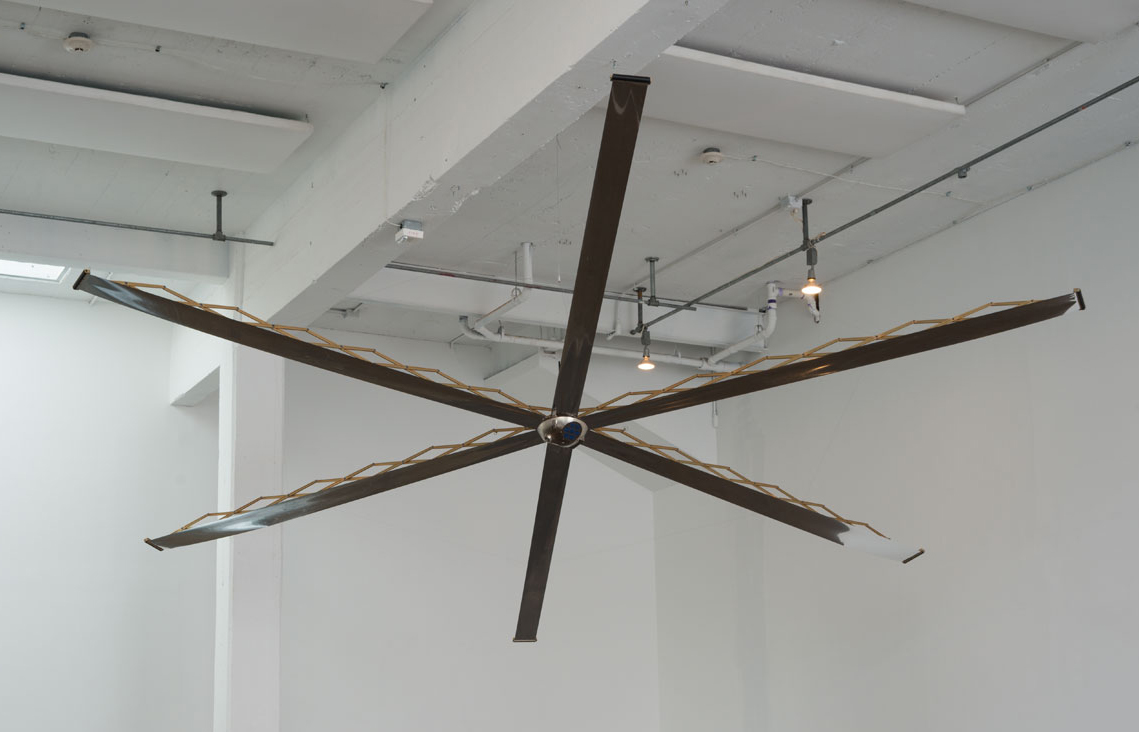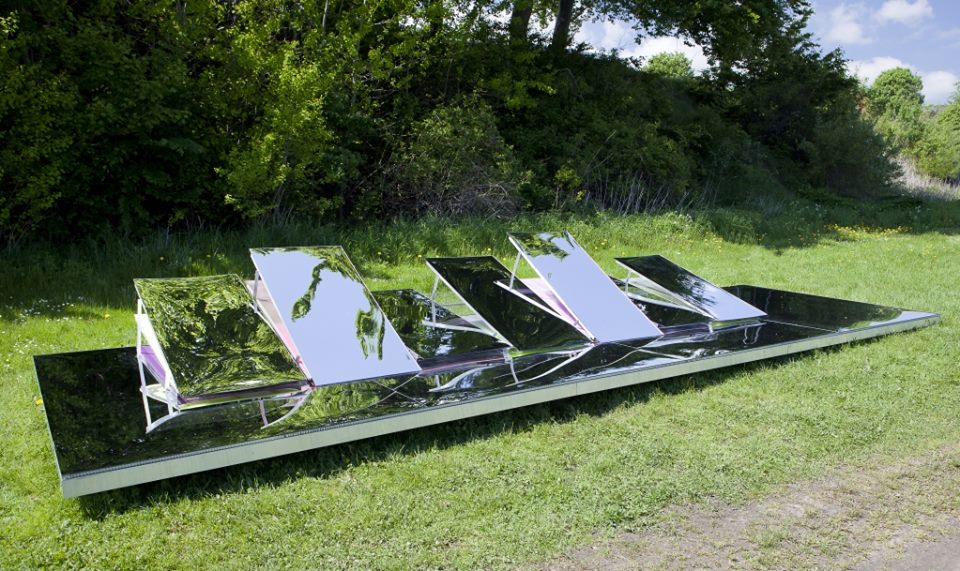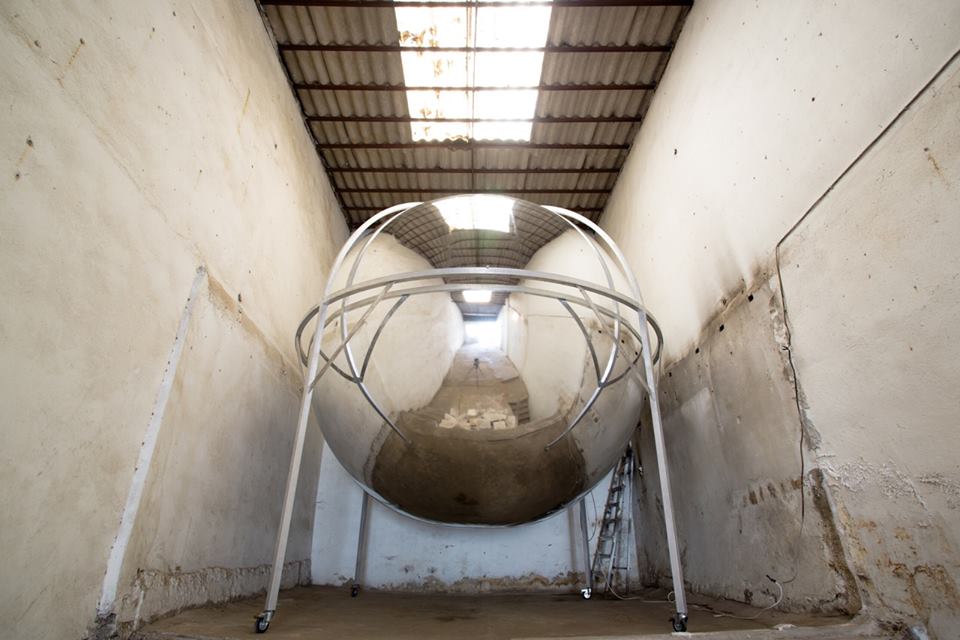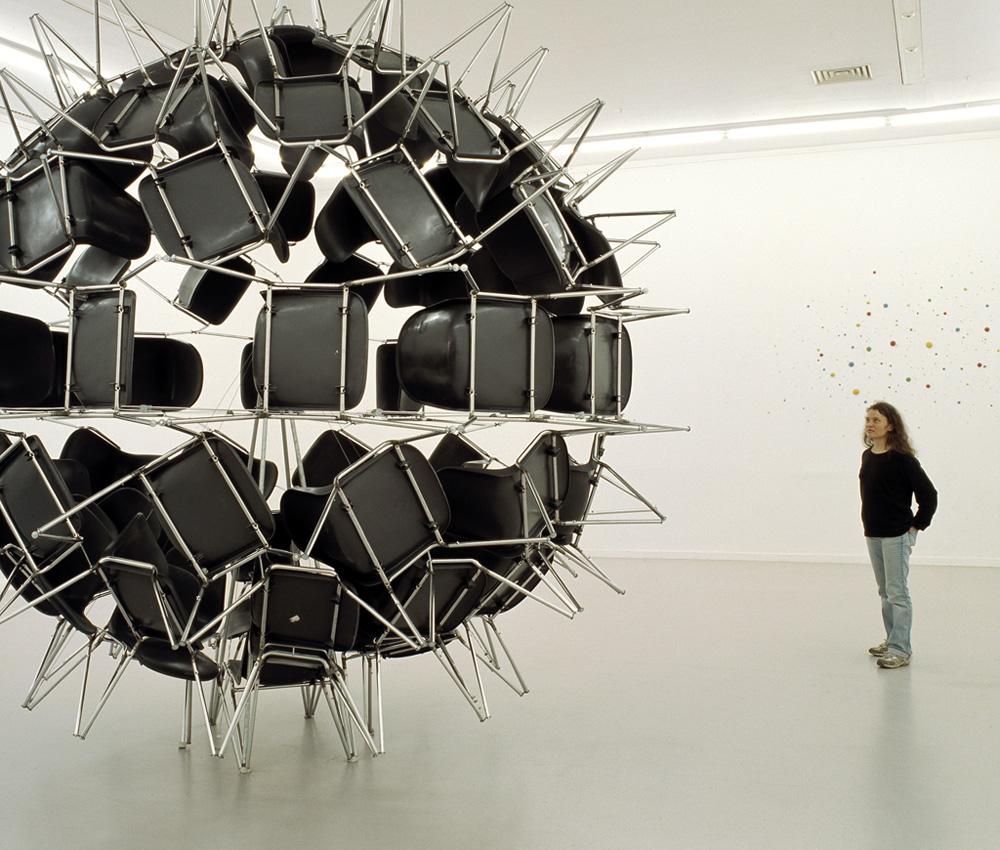فيكتوريا فيسنا
Blue Morph von der Medienkünstlerin Victoria Vesna und dem Nanowissenschaftler James Gimzewski ist eine intuitive Installation, die nanoskalige Bilder und Töne aus der Metamorphose einer Raupe in einer Motte als Kulisse für die menschliche Schaffung von Flugapparaten verwendet. Der Schall wurde aufgezeichnet, indem die Bewegungen der Puppenoberfläche unter Verwendung der Rasterkraftmikroskopie (AFM) während der Umwandlung von einem Zustand in einen anderen ihrer Entwicklung gemessen wurden.Es ist wahr, dass wir uns vorstellen, dass Motten still und bunt sind. Sie erzeugen jedoch intensives und unhörbares Geräusch. Die für das menschliche Auge sichtbare Farbe ist kein Pigment, sondern eine optische Täuschung, die durch die genaue Anordnung des biologischen Materials auf der Oberfläche erzeugt wird und durch dieses Nanotrama die Strukturfarbe erzeugt.In der Installation werden nicht nur das Unhörbare hörbar und das Unsichtbare sichtbar gemacht, sondern auch Nachrichten über Fluggeräte von Männern projiziert, wie Flugzeugverspätungen, Unfälle, Bombenanschläge, Satellitenschüsseln, Raketenstart und UFO-Beobachtung. Die Arbeit entsteht in Geräuschen und Handlungen nur, wenn der Besucher still und still ist.So versuchen Künstler in Blue Morph, biologische Systeme als eine Mischung aus Schönheit und Eleganz der Natur als die lauten Maschinen und Systeme zu interpretieren, die vom Menschen hergestellt werden. Der Blick nach innen und außen sowie die Dekonstruktion unserer mechanistischen Sicht auf die Welt spiegeln sich in den nanophoton manipulierten Photonen wider, was an sich eine Metapher der nanotechnologischen Ära suggeriert.
